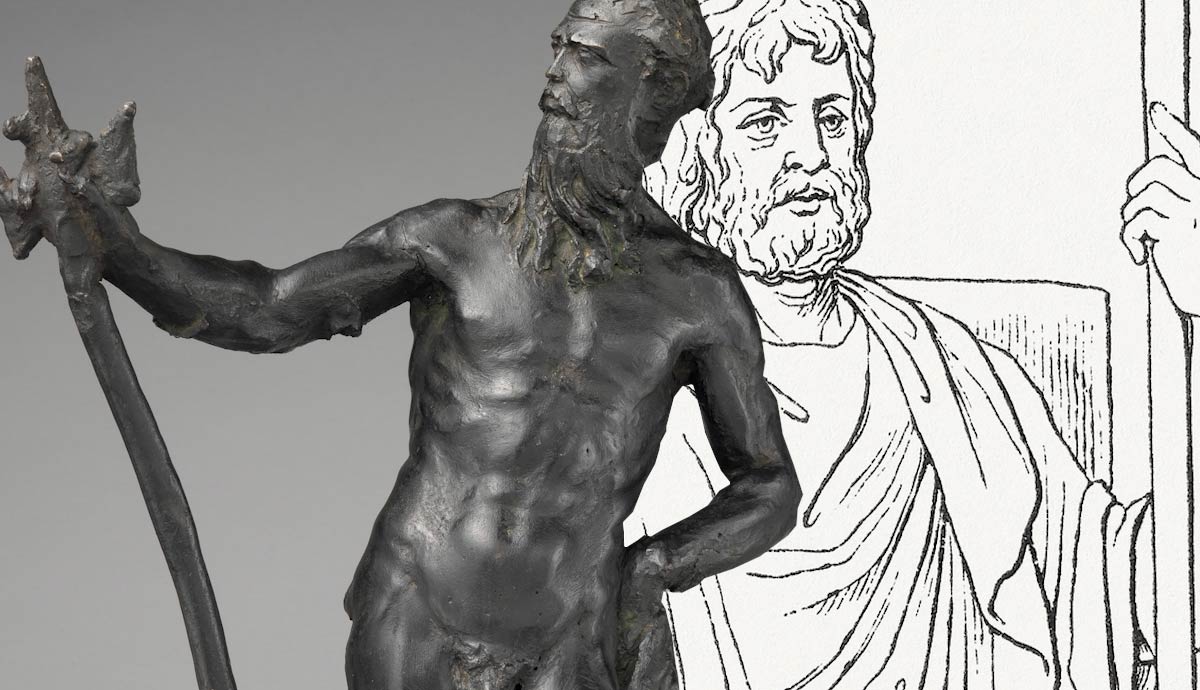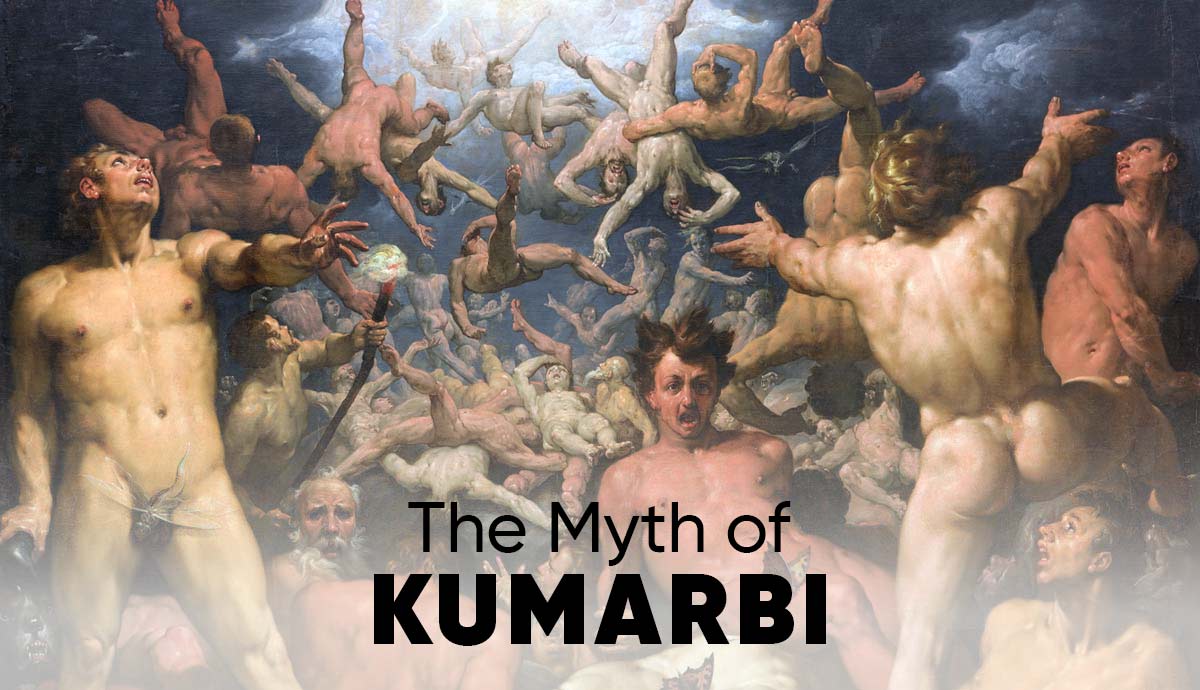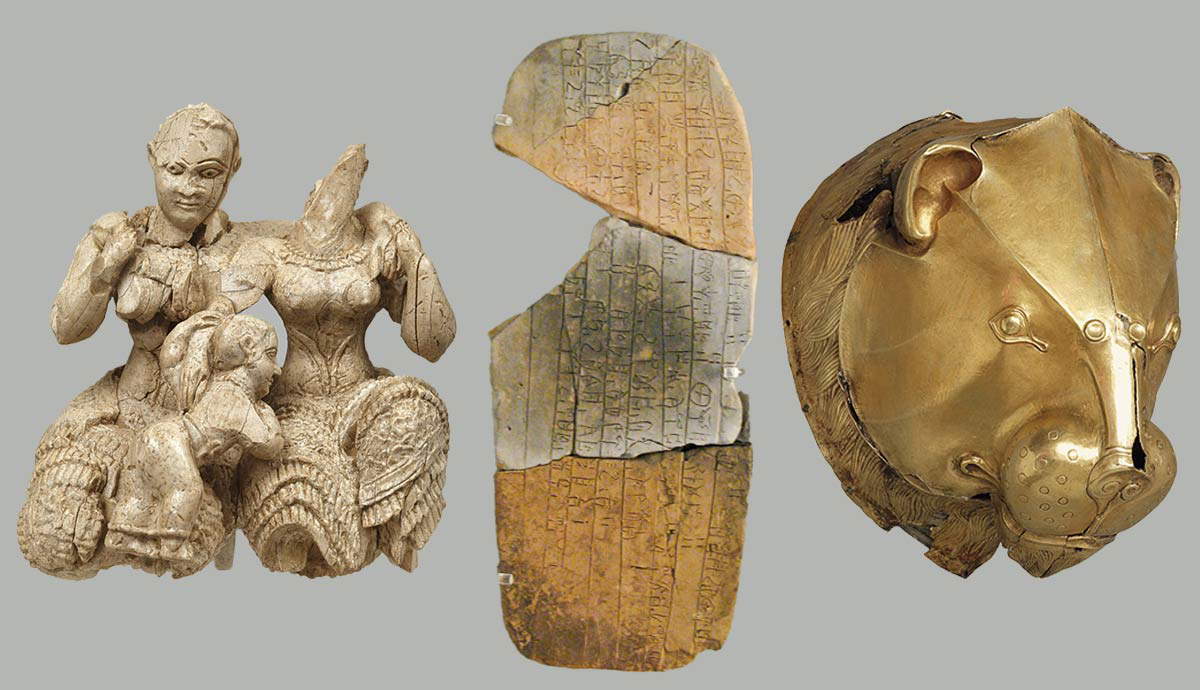
Hades was one of the primary Olympian deities and brother to Zeus and Poseidon. He was a chthonic god, meaning a god of the earth with special power over the dead. He was sometimes called “Zeus below the earth” in deference to the power he wielded and to the size of his kingdom. There was a cultural aversion to invoking the god’s name, instead calling him by his many epithets like Host-of-Many or He-Who-Leads-Away. He was also commonly referred to as Plouton or Pluto, meaning wealthy, most likely due to the fact that precious metals were found beneath the earth and so would be part of his domain. This name was also used by the Romans, who amalgamated Hades with their own original god of the underworld, Dis Pater.
Unlike many of his siblings, such as Zeus or Demeter, Hades had no widespread cult of worship. People feared to speak his name out loud for fear that he would take notice of them. Hades had very few of his own myths, but he featured in many stories of Greek heroes such as Heracles, Theseus, and Orpheus. In these stories he acted as an antagonistic force for the heroes to overcome.
1. Birth and Ascension of Hades

Hades was born to the Titan Kronos and the mother goddess Rhea. He was one of six children and the eldest of their three sons. However, due to a prophecy given to Kronos describing how he would be overthrown by one of his sons in the same way he overthrew his own father, Ouranos, the Titan swallowed his children as soon as they were born. He gulped down five of the six. Only Zeus, the youngest, escaped due to a clever trick by Rhea, who swaddled a stone in place of the baby Zeus for Kronos to swallow. Zeus grew up on Crete and returned to eventually overthrow his father. Kronos regurgitated his children in the reverse order he swallowed them, so the eldest son Hades became the youngest.

Hades then joined Zeus in a war against their father and the other Titans, known as the Titanomachy. They freed the Cyclopes from Tartaros to aid them and, as a gift, they gave Hades his signature helmet of invisibility. Zeus was gifted the thunderbolt and Poseidon his trident, and with these weapons they defeated their father and usurped him. The brothers divided up his powers among themselves, deciding which domain they would rule by casting lots. Zeus drew the heavens, Poseidon the seas, and Hades the underworld (Apollodorus, 2nd century CE).
2. Abduction of Persephone

The central myth about Hades involves his abduction and rape of Persephone, daughter of Demeter. The earliest recounting of this myth comes from the Homeric Hymn to Demeter, composed sometime in the mid-seventh century BCE. The hymn recounts the abduction, as well as Demeter’s travels across the earth as she grieved for her lost daughter.
As the story goes, Zeus gave Persephone as a bride to Hades, both without her knowledge or consent. At Zeus’ instructions, Gaia laid a trap for the young goddess in the form of a beautiful meadow. Persephone was playing in the meadow, picking flowers and dancing with nymphs, when she spied the most beautiful flower she’d ever seen. When she reached out to grab it, the earth opened up and out sprung Hades on his chariot. He snatched the goddess up, ignoring her cries for help, and took her away to the underworld. Demeter heard her daughter’s cries and, upon learning that Hades had taken her with Zeus’ permission, she went into a self-imposed exile. Without Demeter, the world fell into a terrible famine that was only ended by Zeus’ intervention.

The king of the gods sent Hermes into the underworld to convince Hades to allow Persephone to return to Olympus. Hades acquiesced to Zeus’ demand and bid Persephone to go back to her mother, but before she could leave he secretly made her eat a pomegranate seed. This simple act would have significant consequences. When Demeter was reunited with her daughter, she sensed that something was wrong and asked her,
“My child, surely you haven’t eaten any food while you were below, have you? Speak up, don’t hide it, so that both of us may know. For, if so, you may dwell with me and your father, the dark-clouded son of Kronos, coming up from hateful Hades and honoured by all the immortals. But if you have eaten any, going back under the caverns of the earth you will live there for a third part of the seasons in a year[…]”
(López-Ruiz, 2014, p.487)
By eating the pomegranate seed Persephone became bound to return to the underworld for a third of every year. This myth served to explain the cycle of seasons and how the gods played a role in these natural phenomena. Persephone returning to the underworld to take her place as Hades’ queen brings the onset of winter, and her return to Olympus marks the start of spring.
3. Leuce and Minthe

Before Persephone, Hades had for his mistress a nymph by the name of Minthe. She was the daughter of the river Cocytus, one of the rivers that flowed through the underworld.
Ovid (1st century BCE) gave a brief mention to this story in Book X of his Metamorphoses, when Venus (Aphrodite) said to Persephone, “[…] were you not once allowed to change a young woman to fragrant mint[?]” Oppian, a second-century author, gives a slightly fuller account. He wrote that Mint, written in Greek as Minthe, was Hades’ mistress before his abduction of Persephone. Afterwards she became jealous and complained loudly, saying that she was more beautiful than Persephone and that Hades would eventually come back to her. Demeter, Persephone’s mother, flew into a rage at hearing her daughter so disrespected and trampled the nymph underfoot. From that spot grew the herb that bears her name.
Leuce was a nymph and one of the daughters of Oceanus. There is little known about her except that Hades fell in love with her and carried her off to the underworld. She lived out her days with him there, and when she died, Hades sprouted a leucen tree in Elysium, the fields of the dead, in her memory. Heracles was said to have crowned himself with the leaves of this tree when he returned from the underworld.
4. Hades and the Labours of Heracles

Hades features twice in the mythos of Heracles. For the hero’s twelfth and final labour, Heracles was tasked with capturing Cerberos, the three-headed hound that guarded the entrance to the underworld. When Heracles finally made it to the House of Hades, he asked the god for the beast and Hades presented him with a challenge. If he could overcome Cerberos without the use of his weapons, then he could have it. Using his bare hands, Heracles wrestled the three-headed hound to submission despite being bitten by the dragon that was the beast’s tail. He carried the hound back through the underworld and presented it to King Eurystheus, completing the final labor. He then returned Cerberos to Hades.
The god encountered Heracles one more time after this. In a brief passage in Book V of The Iliad, Homer (8th century BCE) writes of how Heracles injured Hades by running him through with a spear:
“Even tremendous Hades
had to endure that flying shaft like all the rest,
when the same man, the son of thunder-shielded Zeus,
shot him in Pylos – there with the troops of battle dead –
and surrendered Death to pain. But Hades made his way
to craggy Olympus, climbed to the house of Zeus,
stabbed with agony, grief-struck to the heart,
the shaft driven into his massive shoulder
grinding down his spirit…”
(ln.449-457)
Hades joined the battle on the side of the Pylians, but was forced to retreat after sustaining the injury. According to Pausanias, only the people of Elis worshiped Hades, which would explain why he came to their aid.
5. Punishments of Hades

A portion of the myths surrounding Hades have to do with the punishments the god inflicts on mortals who have offended him. One such mortal was Sisyphos, a mythological king of Corinth and grandfather to the hero Bellerophon. In one version of his story Sisyphos betrays one of Zeus’ secrets, so the god sent Hades to collect him and bring him to the underworld. The king managed to trick Hades and chain him, saving his own life but also preventing anyone else on earth from dying as long as the god remained chained. Ares intervened and freed Hades, then turned Sisyphos over to him. In another version of the story it is Thanatos, the god of death, who is sent to collect the king and subsequently chained.
Before he died, Sisyphos told his wife Merope not to perform the customary funerary rites and to throw his body into the city square. When he reached the underworld he tricked Hades, or in another version, Persephone, into allowing him to return to the world of the living to punish his wife for her blatant disrespect of his body. He was allowed to return, but the crafty Sisyphos never went back down to the underworld. When he finally died of old age the gods hadn’t forgotten what he had done. Hades condemned him to an eternity of pushing a massive boulder up a hill, only for it to inevitably roll back down before it ever reached the top.

Greek heroes Theseus and Pirithous also spent time in the underworld suffering one of Hades’ punishments. The two men resolved that they would each marry a daughter of Zeus; Theseus carried off Helen of Sparta, but Pirithous was more ambitious. He vowed to take Persephone as his wife. The two men descended into the underworld to find her, traversing all the dangers until they finally arrived at the House of Hades. The god invited them inside for a banquet and bid them to sit down on two stone chairs. When they did, they became stuck, and they were bound to the chairs by coils of snakes. Hades knew of their plan and knew that it was Pirithous’ idea, so, while he eventually allowed Theseus to escape with the help of Heracles, Pirithous remained imprisoned forever.
The bard Orpheus, one of Jason’s Argonauts, was another who descended into the underworld, but his motivation was love. The first-century BCE poet Ovid recounts the story in Book X of his Metamorphoses. Overcome with grief by the death of his wife, Eurydice, he went down to the underworld to ask Hades to restore her to life. He made this request in the form of a song. When he was done, all the spirits and tormented dead wept, and neither Persephone nor Hades could deny him.
Hades granted his request, bringing forth Eurydice, who was still limping from the wound that had killed her, on the condition that he not look back at all until he had exited the underworld. The bard and his wife journeyed back upwards, but as he neared the exit Orpheus feared that Eurydice wouldn’t make it all the way with her injury. He turned back, and as he did his wife slipped back into the underworld for a second time. Orpheus begged the ferryman at the River Styx to allow him back into the underworld, but he was denied.

Hades was not the protagonist in any of his own myths, but he was featured in many of the most well-known stories from antiquity. While he mainly kept to himself in the underworld, the stories of heroes often brought them into contact with the world of the dead. He was a force to overcome or to bargain with, and any who cheated him found themselves eternally tormented. For while some escaped, they always returned to him in the end.
References
Apollodorus. (1st or 2nd century CE). The Library of Greek Mythology (R. Hard, trans). Oxford University Press, 1997
López-Ruiz, C. (Ed.). (2014). Gods, Heroes, and Monsters: A Sourcebook of Greek, Roman, and Near Eastern Myths in Translation. Oxford University Press
Homer. (8th or 7th century BCE). The Iliad (R. Fagles, trans). Penguin Books USA Inc., 1990
Hesiod. (8th century BCE). Theogony and Works and Days (D. Wender, trans). Penguin Group, 1973
Ovid. (43 B.C.-17 A.D. or 18 A.D.). Metamorphoses (C.Martin, trans). W. W. Norton & Company, Inc., 2005










